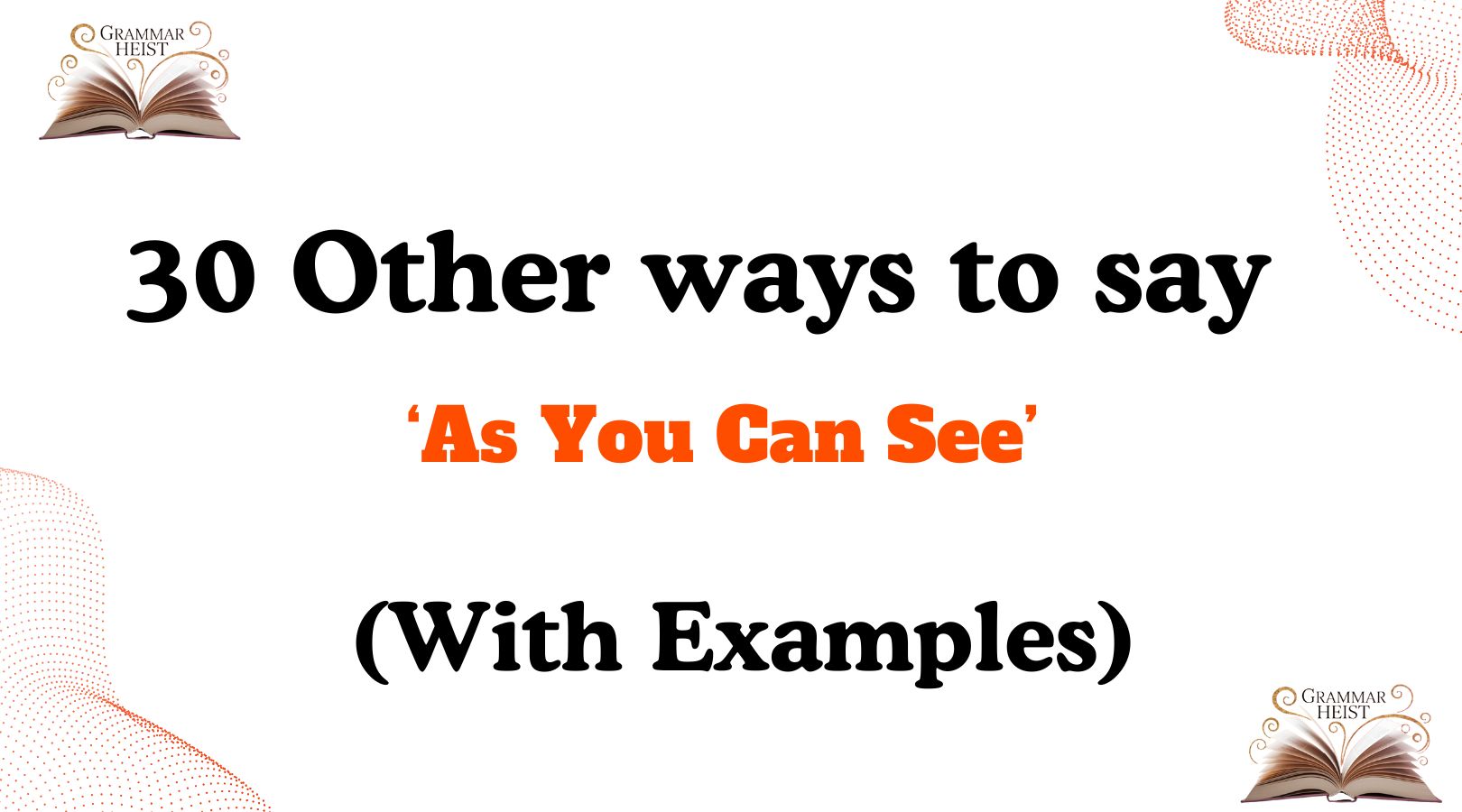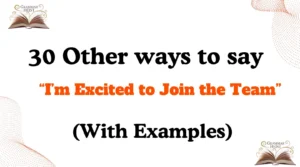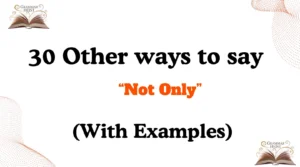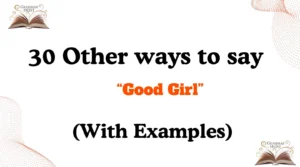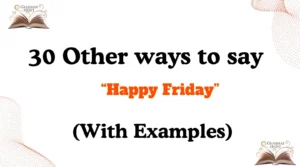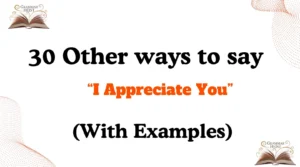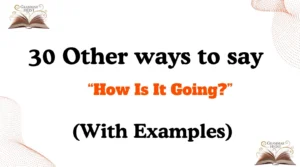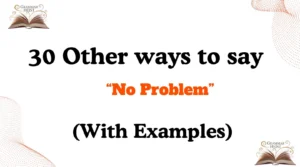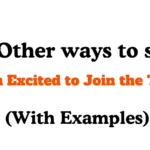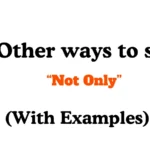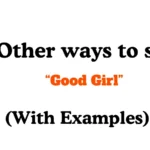Finding the right words matters when we want to sound thoughtful, caring, and professional. A phrase like “as you can see” is common, but sometimes it may feel a little too formal, overused, or even slightly distant. By learning other ways to say “as you can see”, you can make your message sound more personal, warm, and engaging.
In this guide, you’ll discover 30 unique alternatives, complete with examples, tone, and explanations to help you use them naturally in conversations, emails, or presentations.
What Does “As You Can See” Mean?
The phrase “as you can see” is used to point out something that should be obvious, noticeable, or clearly understood. It often highlights facts, evidence, or visuals that support what you are saying.
Is It Professional/Polite to Say “As You Can See”?
Yes, “as you can see” is generally polite and professional. However, it can sometimes sound a little dismissive if not used carefully. That’s why choosing a softer or friendlier alternative can make your communication feel warmer and more considerate.
Pros or Cons
Pros:
- Clear and straightforward.
- Commonly understood by everyone.
- Works well in presentations, explanations, and formal writing.
Cons:
- Can feel repetitive or cliché.
- Might sound slightly condescending if used in sensitive contexts.
- Lacks a personal touch.
Synonyms For “As You Can See”
- As shown here
- Clearly
- As demonstrated
- Notice that
- As illustrated
- It’s evident that
- Take note
- You’ll notice
- Evidently
- As displayed
- You can observe
- As indicated
- It’s clear that
- Observe that
- As reflected
- Just look at
- As evident from
- As highlighted
- It’s obvious that
- As presented
- As pointed out
- It’s apparent that
- Look at this
- You’ll observe
- As evidenced
- You can tell
- As mentioned
- It’s visible that
- As observed
- From this, you can see
1. As shown here
Scenario: Perfect for presentations or documents where visuals are provided.
Examples:
- As shown here, the numbers reflect steady growth.
- As shown here, the process is simple and effective.
- As shown here, the design has improved dramatically.
Tone: Professional and clear.
Explanation: Best when pointing directly to charts, slides, or diagrams.
2. Clearly
Scenario: Use this when the situation or evidence speaks for itself.
Examples:
- Clearly, the results show a positive trend.
- Clearly, teamwork has improved our progress.
- Clearly, this solution saves both time and money.
Tone: Direct and confident.
Explanation: Works well in persuasive or motivational communication.
3. As demonstrated
Scenario: Helpful in formal discussions or research-based presentations.
Examples:
- As demonstrated in the study, the method is reliable.
- As demonstrated by the results, the approach works.
- As demonstrated earlier, the model is effective.
Tone: Formal and academic.
Explanation: Ideal when evidence or proof is essential.
4. Notice that
Scenario: Use this when guiding someone’s attention gently.
Examples:
- Notice that the figures match our predictions.
- Notice that the timeline aligns with our goals.
- Notice that the colors improve readability.
Tone: Friendly and instructive.
Explanation: Softer than “as you can see,” invites attention without pressure.
5. As illustrated
Scenario: Great for pointing to visuals or examples.
Examples:
- As illustrated in this chart, sales increased by 20%.
- As illustrated by this design, we focused on simplicity.
- As illustrated in the graph, trends are upward.
Tone: Formal yet clear.
Explanation: A polished way to refer to supporting visuals.
6. It’s evident that
Scenario: Use in professional contexts to highlight clarity.
Examples:
- It’s evident that the strategy is effective.
- It’s evident that the team is motivated.
- It’s evident that the product is performing well.
Tone: Respectful and professional.
Explanation: Sounds more thoughtful than “as you can see.”
7. Take note
Scenario: Perfect for instructions or training.
Examples:
- Take note of how the system responds.
- Take note of the safety features included.
- Take note of the time difference here.
Tone: Instructional but polite.
Explanation: Helps learners or listeners focus on important details.
8. You’ll notice
Scenario: Good for conversational and polite communication.
Examples:
- You’ll notice the improvements in the design.
- You’ll notice how much smoother this feels.
- You’ll notice the change in tone.
Tone: Warm and engaging.
Explanation: Makes the listener feel included and respected.
9. Evidently
Scenario: Stronger and more formal than “clearly.”
Examples:
- Evidently, the changes had a positive impact.
- Evidently, our strategy worked well.
- Evidently, teamwork was the key factor.
Tone: Confident and formal.
Explanation: Ideal for analysis and professional reports.
10. As displayed
Scenario: Best when referring to visuals or outputs.
Examples:
- As displayed on the screen, progress has been steady.
- As displayed in the report, the figures align.
- As displayed above, our goals remain consistent.
Tone: Formal.
Explanation: Useful in presentations, emails, or academic settings.
11. You can observe
Scenario: Great for observations or experiments.
Examples:
- You can observe the change in color here.
- You can observe how quickly the system reacts.
- You can observe the difference in results.
Tone: Neutral and polite.
Explanation: Encourages active noticing without pressure.
12. As indicated
Scenario: Professional reports and references.
Examples:
- As indicated in the data, results are improving.
- As indicated by the survey, satisfaction is high.
- As indicated above, timelines are aligned.
Tone: Formal and respectful.
Explanation: Good for structured writing and reporting.
13. It’s clear that
Scenario: Polite, everyday replacement.
Examples:
- It’s clear that the project is on track.
- It’s clear that customers appreciate the service.
- It’s clear that we need more resources.
Tone: Positive and clear.
Explanation: Sounds natural in both speech and writing.
14. Observe that
Scenario: For technical or instructional contexts.
Examples:
- Observe that the figures balance perfectly.
- Observe that the design fits the requirements.
- Observe that the colors match the theme.
Tone: Direct and academic.
Explanation: Formal, best for instructions and training.
15. As reflected
Scenario: Useful when outcomes mirror expectations.
Examples:
- As reflected in the report, growth is steady.
- As reflected in the survey, opinions are positive.
- As reflected in the chart, performance is strong.
Tone: Professional.
Explanation: Emphasizes alignment and accuracy.
16. Just look at
Scenario: Informal and conversational.
Examples:
- Just look at the difference in results.
- Just look at how much smoother this is.
- Just look at the amazing design.
Tone: Casual and friendly.
Explanation: Adds enthusiasm, works in casual settings.
17. As evident from
Scenario: Formal and descriptive.
Examples:
- As evident from the data, sales improved.
- As evident from the reactions, people enjoyed it.
- As evident from the report, the process is efficient.
Tone: Formal.
Explanation: Stronger than “as you can see,” with authority.
18. As highlighted
Scenario: When stressing key details.
Examples:
- As highlighted in the report, safety is a priority.
- As highlighted by the team, communication is vital.
- As highlighted above, progress is visible.
Tone: Professional.
Explanation: Great for drawing focus to main points.
19. It’s obvious that
Scenario: When something is undeniable.
Examples:
- It’s obvious that the plan is working.
- It’s obvious that morale is higher.
- It’s obvious that results exceeded expectations.
Tone: Straightforward.
Explanation: Be careful—can sound blunt if not softened.
20. As presented
Scenario: Ideal for formal meetings or documents.
Examples:
- As presented earlier, our goals are realistic.
- As presented in the chart, costs were reduced.
- As presented in this model, the process works.
Tone: Polished and professional.
Explanation: Adds credibility in structured contexts.
Read More:30 Other Ways to Say ‘Please Feel Free’ (With Examples)
21. As pointed out
Scenario: Use when referring to prior notes or comments.
Examples:
- As pointed out earlier, teamwork drives success.
- As pointed out in the survey, feedback is positive.
- As pointed out by experts, timing matters.
Tone: Respectful.
Explanation: Acknowledges earlier remarks or data.
22. It’s apparent that
Scenario: Professional alternative to “it’s clear.”
Examples:
- It’s apparent that sales are climbing steadily.
- It’s apparent that people trust the brand.
- It’s apparent that the method works.
Tone: Neutral and formal.
Explanation: Balanced, avoids sounding harsh.
23. Look at this
Scenario: Friendly and engaging.
Examples:
- Look at this amazing improvement.
- Look at this chart—growth is strong.
- Look at this design—it’s so clean.
Tone: Casual and inviting.
Explanation: Great for informal conversations.
24. You’ll observe
Scenario: More formal than “you’ll notice.”
Examples:
- You’ll observe a steady increase in progress.
- You’ll observe that the timeline aligns well.
- You’ll observe that safety is prioritized.
Tone: Polite and professional.
Explanation: A softer way to guide attention.
25. As evidenced
Scenario: Best for reports and analysis.
Examples:
- As evidenced by the survey, customers are satisfied.
- As evidenced in the report, revenue has grown.
- As evidenced above, efficiency improved.
Tone: Formal.
Explanation: Strong and credible.
26. You can tell
Scenario: Conversational and warm.
Examples:
- You can tell how much happier the team is.
- You can tell the process has improved.
- You can tell we’ve made real progress.
Tone: Friendly and natural.
Explanation: Adds empathy, feels personal.
27. As mentioned
Scenario: Referencing prior discussions.
Examples:
- As mentioned earlier, we’ll meet at 3 PM.
- As mentioned in the report, costs were reduced.
- As mentioned before, quality remains high.
Tone: Clear and professional.
Explanation: Keeps communication consistent.
28. It’s visible that
Scenario: Good for physical or noticeable changes.
Examples:
- It’s visible that the design has improved.
- It’s visible that the team is more engaged.
- It’s visible that progress is strong.
Tone: Formal.
Explanation: A more descriptive version of “clear.”
29. As observed
Scenario: Great for research or formal reports.
Examples:
- As observed in the study, results are consistent.
- As observed in practice, the method is effective.
- As observed during trials, feedback is positive.
Tone: Neutral and professional.
Explanation: Fits well in academic or analytical contexts.
30. From this, you can see
Scenario: Casual but still professional.
Examples:
- From this, you can see the growth pattern clearly.
- From this, you can see the strategy’s impact.
- From this, you can see teamwork matters.
Tone: Warm and explanatory.
Explanation: A softer, friendlier twist on the original.
Conclusion
Choosing other ways to say “as you can see” allows you to sound more empathetic, professional, and engaging. Each phrase works best in specific situations—from casual conversations to academic reports. By using these alternatives, you can communicate more thoughtfully while ensuring your tone matches the context.

Emma Brooke is a passionate advocate for effective communication and language mastery. As a dedicated professional in the field of grammar and writing, Emma brings a wealth of knowledge and expertise to those seeking to improve their linguistic skills. With a focus on clarity, precision, and style, Emma Brooke is committed to helping individuals refine their language use to communicate confidently and effectively.
